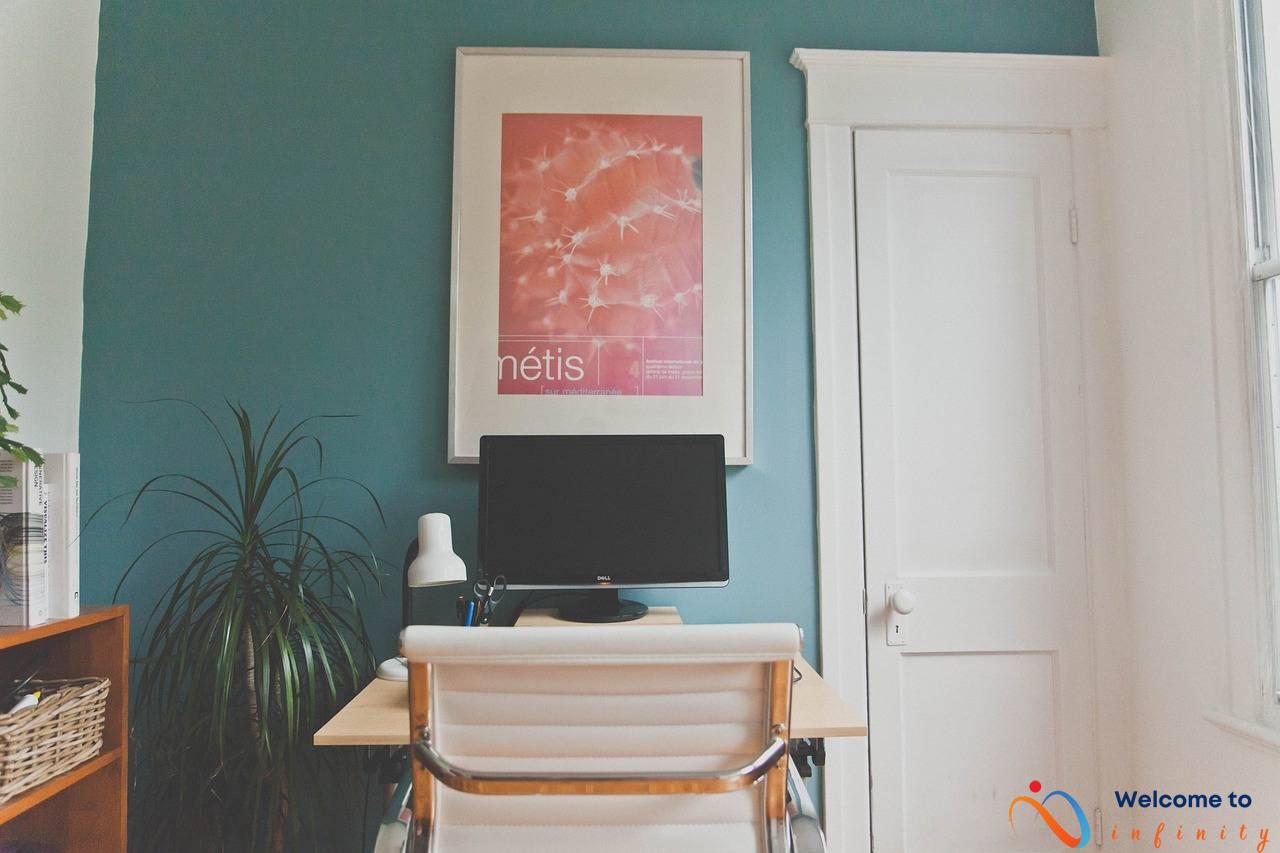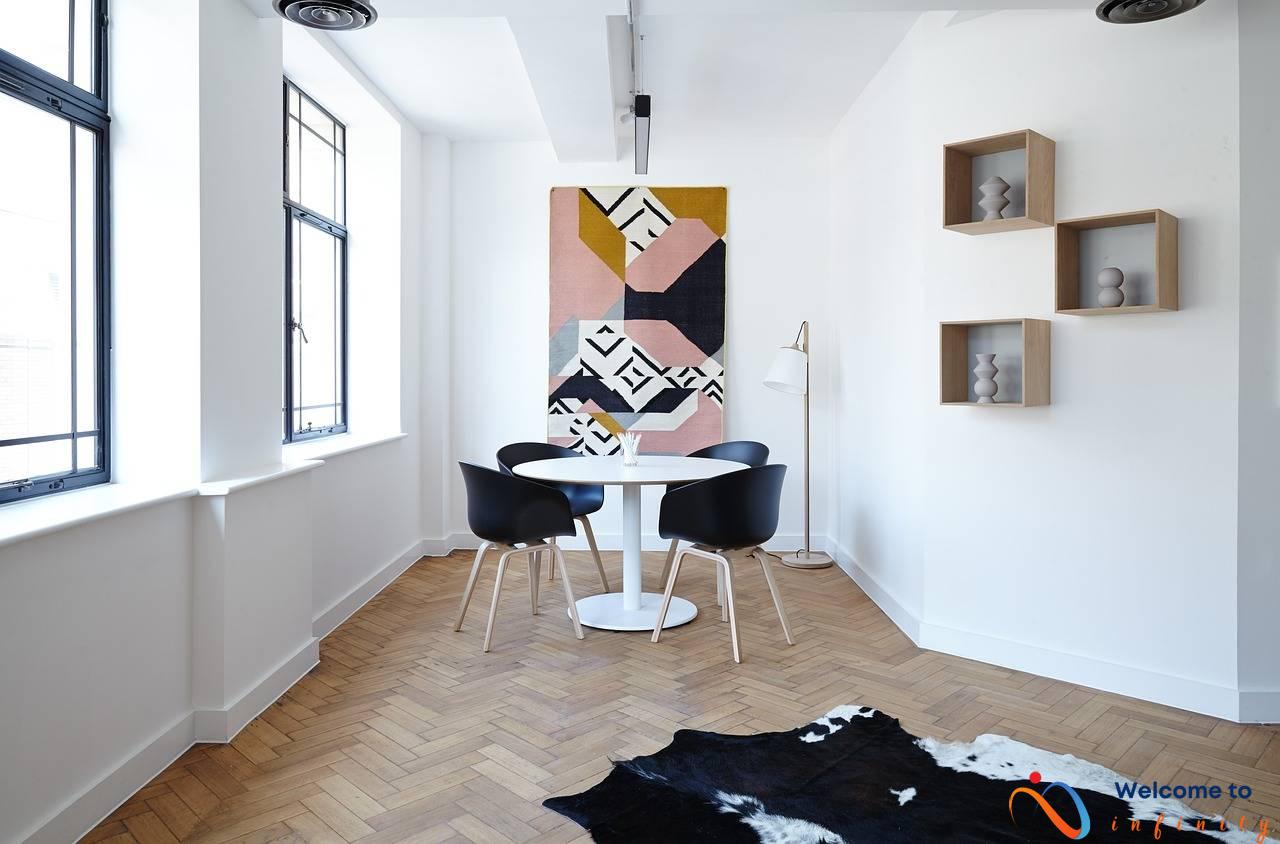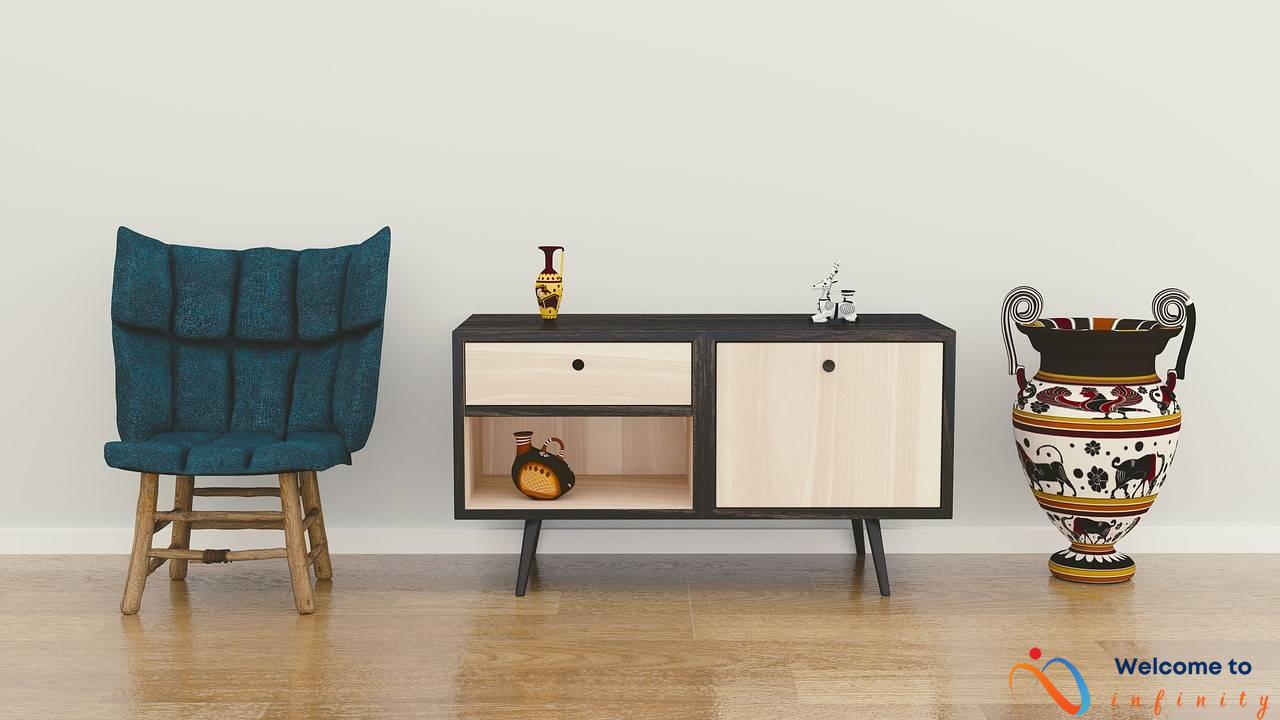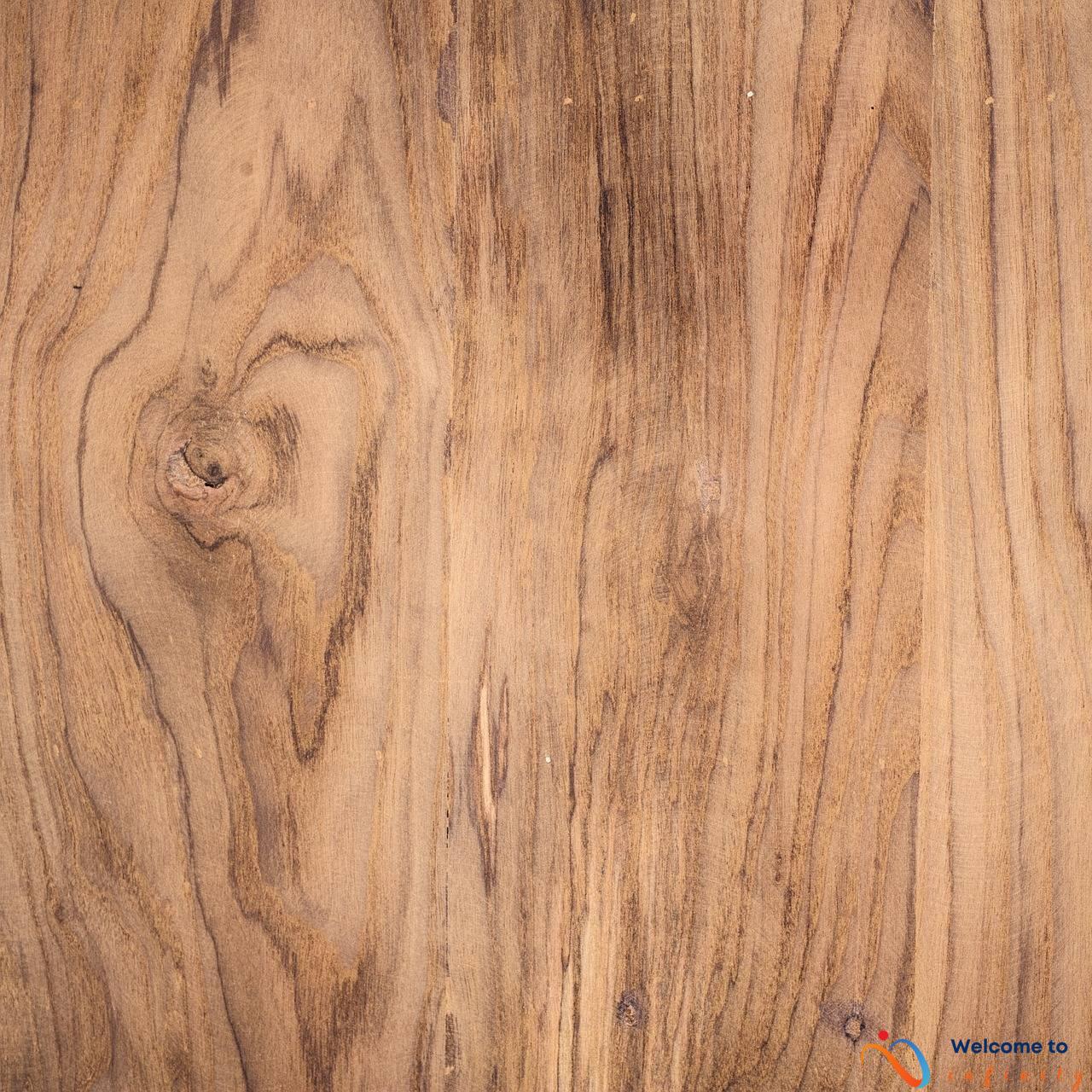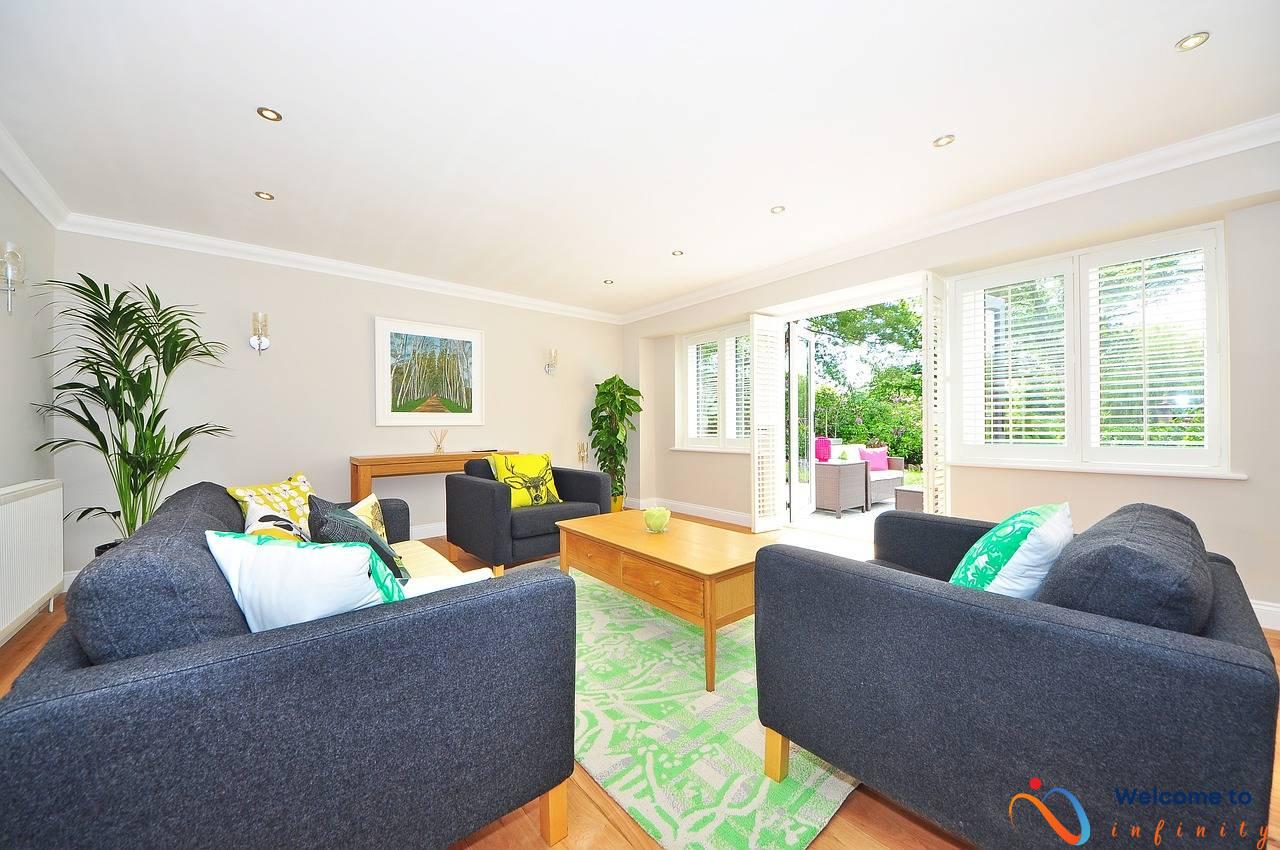If you have a collection of modern art, why not showcase it by creating a gallery wall in your home? A well-designed gallery wall can elevate your space and make your art collection truly stand out. In this article, we'll guide you through the process of curating a stunning gallery wall with your contemporary art collection.
The first step in creating a gallery wall is to determine the wall space where you want to display your artwork. Measure the area to determine the size and number of artworks that will fit on your wall. You'll also want to consider the color scheme of your space to choose a complementary color palette for your gallery wall. Opt for colors that will help your artwork pop and make a statement in your home.
When selecting a color scheme, it's important to consider the style of your contemporary art collection. You want the colors to complement the pieces you'll be hanging on the wall. If you're not sure where to start, choose neutral colors like white, gray, or black that won't clash with your artwork. Alternatively, you can opt for bold colors that contrast or complement the colors in your artwork or furniture.
Once you've selected your color scheme, it's time to arrange your artwork. Create a layout plan that will best showcase your pieces on the wall. Decide on a centerpiece for your gallery wall, such as the largest or most eye-catching piece, and arrange the other artworks around it. Ensure that all artworks are spaced evenly and aligned with one another to create a cohesive and polished look.
Finally, it's time to hang your artwork on the wall. Make sure to use the proper tools and techniques to securely hang each piece. Consider the weight of each artwork and use appropriate hanging hardware. Use a level and measuring tape to make sure that all pieces are level and spaced apart evenly for a polished final product.
Determine the Wall Space
If you want to create a gallery wall with your modern art collection, the first step is to determine the wall space. Measure the wall where you want to hang your artwork to decide how many pieces you can display and what sizes you should choose.
Start by assessing the wall's dimensions to determine the available space and the size of artwork that would fit best. Consider the furniture placement and the overall style of the room when selecting the wall space. If you have a large wall, you can display more artworks, or you can choose to create a smaller gallery wall on a smaller wall space.
After measuring the wall space, consider the orientation of your artwork. Depending on the size of your wall space, you can choose to display your artworks in portrait or landscape orientation. This decision will also affect the placement of each artwork and how you arrange them on the wall.
You can use a table or a list to keep track of the wall space and the sizes of your artworks. This will make it easier to visualize how the artwork will look on the wall and decide which pieces to display. Keep in mind that the wall space should be proportional to the artwork's size to create a balanced and visually attractive display.
Choose a Color Scheme
Choosing the right color scheme for your gallery wall is essential in creating an overall cohesive look that complements your space and makes your art stand out. When selecting a color scheme, consider the style of your contemporary art collection and the color palette of your furniture and decor. Here are some tips to help you choose the perfect color scheme:
The first step in selecting a color scheme for your gallery wall is to consider the style of your contemporary art collection. If your artworks have a consistent style, color, or theme, use that as a starting point for your color scheme. For example, if you have a collection of abstract paintings in bold colors, choose a color scheme that complements or contrasts those colors.
If you're unsure about which colors to choose, stick with neutral colors like white, gray, or black. These colors are versatile and won't clash with your artwork. Plus, they provide a great backdrop for your art to stand out against.
For a more adventurous look, opt for bold colors that contrast or complement the colors in your artwork or furniture. This can include shades of blue, green, yellow, or red. Just make sure to choose colors that won't overwhelm your space or your art.
A mood board is a great way to visualize your color scheme and see how it will look with your art and decor. Collect images of your artwork, furniture, and decor, and then add swatches of colors that you're considering. This can help you see how the different colors and elements will work together in your space.
When selecting a color scheme, make sure to avoid any colors that clash with each other. This can make your gallery wall look chaotic and uninviting. Instead, choose colors that complement each other and create a cohesive look.
By following these tips, you can choose a color scheme that is perfect for your contemporary art collection and complements your space. Remember, your gallery wall should reflect your personal style and taste, so don't be afraid to experiment with different colors and combinations.
Consider the Art Style
When creating a gallery wall with your contemporary art collection, it's essential to consider the art style. The color scheme you select should complement the overall style of your collection.
If your artwork is predominantly abstract or has a minimalist design, a color scheme that is primarily neutral with shades of white, gray, or black may be the best choice. These colors won't clash with your artwork but will instead create a harmonious blend.
On the other hand, if your contemporary art collection features bold and vibrant colors, a complementary color scheme may be the way to go. Opt for bold colors that contrast or complement the colors in your artwork or furniture. For instance, if you have a colorful abstract painting, you could choose a color from the artwork to use as your accent color on the wall.
To better understand which color scheme works best for your contemporary art collection, create a swatch book with samples of your wall color, flooring, furniture, and, most importantly, your art pieces. This will make it easier for you to determine a color scheme that creates balance and cohesion in your space.
In conclusion, selecting the right color scheme for your contemporary art collection is crucial when creating a gallery wall. By considering the style of your artwork and opting for a complementary color scheme, you'll be able to showcase your collection beautifully while creating a harmonious and welcoming space in your home.
Neutral Colors
One of the color schemes you can opt for when creating a gallery wall with your contemporary art collection is using neutral colors. Choosing neutral colors such as white, gray, or black can help ensure that your wall won't clash with your artworks. Neutral colors provide a simple, minimalist backdrop to your gallery wall, putting the focus on your artworks.
If you have a mix of different styles and colors among your art collection, using neutral colors can help create balance and coherence. For example, if you have a colorful artwork, placing it on a neutral-colored wall can create a striking contrast, making the artwork stand out even more.
An advantage of using neutral colors is their versatility. These colors are classic and timeless and work well in any interior design style. They can also complement other colors and patterns, making them a great choice for any space.
When it comes to the frame or matting of your artworks, using neutral colors can also help create a more cohesive look. For example, a black frame can help bold colors pop, while a white frame can make soft colors appear brighter.
Bold Colors
If you're looking to add a pop of color to your gallery wall, bold colors are the way to go. You can opt for colors that contrast with your artwork or furniture, or choose colors that complement them. For instance, if your art collection features a lot of cool colors like blues and greens, you may want to add a bold accent in a warm color, such as a bright red or orange.
When choosing bold colors, it's important to consider the overall color scheme of your space. You don't want to select colors that clash with your existing décor. Consider using a color wheel to help you choose complementary colors. Alternatively, you can use a neutral color as your base and then add a few bold pops of color to create a cohesive and visually interesting gallery wall.
You can also experiment with using different shades and tones of bold colors. For example, if you're choosing a bold blue, you can use lighter shades of blue as well as darker shades to create depth and interest. You can even add metallic accents in bronze, gold or silver to give your gallery wall a glamorous touch.
When selecting bold colors, it's important to choose artwork that can handle the intensity. Abstract artwork and graphic prints are particularly suitable for bold colors. Alternatively, you can add a bold mat to a more subtle piece to give it some extra oomph.
By using bold colors in your gallery wall, you can add visual interest and create a unique space. Just remember to keep the overall color scheme in mind and experiment to find a style that works for you.
Arrange your Artwork
When it comes to arranging your artwork, creating a layout plan is crucial to ensure that your pieces are showcased in the best possible way. First, consider the overall size and shape of your wall space. This will help you determine the number of artworks and their sizes that should be displayed.
Once you have an idea of the size and quantity of your artwork, it's time to start arranging. Begin by selecting a centerpiece – this could be your largest or most eye-catching piece. Arrange the other artworks around it, keeping in mind the overall balance and composition of the wall.
To create a cohesive and polished look, ensure that all artworks are spaced evenly and align with one another. A great way to do this is to create a mock-up on the floor using paper cutouts of your artwork. This will allow you to experiment with different arrangements before committing to hanging them on the wall.
Another helpful tip is to use the rule of thirds. Divide your wall space into thirds both horizontally and vertically, and aim to position your artwork along these lines. This will create a visually pleasing and well-balanced composition.
In summary, creating a layout plan for your artwork is vital in ensuring that they are showcased in the best possible way. Consider the size and shape of your wall space, select a centerpiece, and use the rule of thirds to guide your arrangement. With careful planning and consideration, you'll be able to curate a stunning gallery wall that showcases your contemporary art collection.
Decide on a Centerpiece
When creating a gallery wall with your contemporary art collection, it's important to choose a focal point for your display. This will help guide the rest of your arrangement and create a cohesive look. The centerpiece should be the largest or most eye-catching piece in your collection.
Consider the style and color of your art when selecting your focal point. You want it to stand out from the other pieces but also complement the overall theme of your collection. Once you've chosen your centerpiece, you can arrange the other artworks around it.
To create balance and harmony in your display, use a variety of sizes and shapes when arranging your artwork. Group pieces that have similar colors or styles together to create a cohesive look. It's also important to consider the spacing between the pieces and to ensure that they are evenly spaced apart.
- Choose a focal point that complements your collection
- Arrange other artworks around the centerpiece
- Use a variety of sizes and shapes
- Group pieces with similar colors or styles together
- Ensure that all artwork is evenly spaced apart
By selecting a centerpiece and arranging your artwork in a thoughtful and intentional way, you can create a stunning gallery wall that will showcase your contemporary art collection and enhance the look of your home.
Create a Balanced Composition
When it comes to creating a stunning gallery wall, a balanced composition plays a crucial role. You want your artworks to be spaced evenly and aligned with one another to create a cohesive look. Start by visualizing the layout of your gallery wall and deciding where each piece should go. You can use a tool like a measuring tape or create a layout plan on paper to help you determine the best arrangement.
Consider the size and shape of each artwork when deciding on the composition. Group smaller pieces together or use them as fillers around larger pieces to create a harmonious composition. You can also use different shapes of frames to add interest to the overall look.
Another important factor to consider is the vertical space between your artworks. Leave enough space between each piece to ensure that they do not crowd one another. Experts suggest leaving a minimum of 2 inches between each frame or artwork.
To make sure that your gallery wall looks polished and cohesive, align all of your artwork with one another. Use a level to ensure that all of your pieces are straight and level with one another. This will create a neat and organized look that will capture the eye of every visitor to your space.
Using a balanced composition in your gallery wall will help create a cohesive look that showcases your artwork beautifully. Take the time to carefully plan and execute your gallery wall arrangement, and you'll have a stunning statement piece that adds character and personality to your home.
Hang Your Artwork
Once you have determined the layout plan for your gallery wall, it's time to start hanging your artwork. Hanging artwork may seem like a simple task, but it's essential to do it properly to prevent damages to your art and your wall. Follow these tips to securely hang each artwork on the wall:
The first thing you need to consider is the weight of each artwork. You don't want to use a hook and hanging hardware that can't support the weight of your piece as it may fall and damage your wall or the artwork itself. Depending on the weight of each piece, you may need to use specialized hanging hardware such as anchors, toggle bolts, or picture hangers.
Before you start hanging your artwork, use a measuring tape to mark the spot where you want to hang each piece on the wall. Ensure that each piece is level, and the spacing between each piece is even. Using a level and measuring tape will give your gallery wall a polished and professional look.
Once you have your hanging hardware and have marked the spots on the wall, it's time to hang your artwork. Consider starting with the centerpiece and then arranging the remaining artworks around it. It's easier to ensure that your gallery wall is balanced and symmetrical if you begin with the center point.
Make sure to hang each piece carefully and securely, double-checking the level and spacing with each new artwork. Once you're done, stand back and admire your beautiful gallery wall.
Consider the Weight of Each Piece
When hanging your contemporary art collection, it's crucial to consider the weight of each piece to ensure that it is securely and safely hung on the wall. Different artworks have different weights, so it's essential to use appropriate hanging hardware that can support the weight of each artwork.
If an artwork is too heavy, it can fall off the wall, causing damage to the piece and potentially harming anyone nearby. Use a measuring tape to accurately measure the dimensions of each artwork and determine its weight. Once you have determined the weight of each artwork, choose an appropriate hanging hardware that can support that weight.
If you are not sure about the weight of an artwork or what hanging hardware to use, consult with a professional or find a product that has a weight rating. It's also important to make sure that the hanging hardware you choose is suitable for the type of wall you are hanging the artwork on. Different walls have different strengths, and a wall-mounted artwork's weight can lead to the wall's damage if it isn't strong enough.
If you are hanging multiple artworks that have different weights, make sure to use different hanging hardware to suit each piece. You never want to use the same hardware for two different weights of artworks as the heavier piece can get unbalanced and fall. Always make sure to use a level and measuring tape to ensure that your artworks are level and evenly spaced apart on the wall.
By considering the weight of each piece and using appropriate hanging hardware, you can securely and safely hang your contemporary art collection on your gallery wall and protect your art pieces.
Use a Level and Measuring Tape
When it comes to hanging your artwork, using a level and measuring tape is essential to ensure that your pieces are hung straight and evenly spaced apart. This helps to create a professional and polished look for your gallery wall.
Start by measuring the distance between the edges of the wall and the placement of your artworks. Use a measuring tape to ensure that the distance between the top and bottom of each artwork is consistent. This will help you to easily align the pieces while hanging them.
Next, use a level tool to ensure that your artwork is hung straight. Place the level on top of the artwork and adjust it until it is level. This will help you to make sure that your artworks are even and won't be crooked on the wall.
If you have a large collection of artworks to hang, it may be helpful to create a template of your desired layout. This can be done by tracing the outline of your artworks on kraft paper or cardboard and arranging them on the wall.
Additionally, it is important to ensure that you are using the appropriate hardware for each artwork based on its weight. For heavier pieces, use a picture hanging hook with a weight capacity that exceeds the artwork's weight. For lighter pieces, a smaller hook or adhesive strips may suffice.
By utilizing a level and measuring tape, creating a balanced and well-spaced gallery wall becomes much easier. Taking the time to properly hang your artworks will help you to showcase them in the best possible way and enhance the overall aesthetic of your space.






